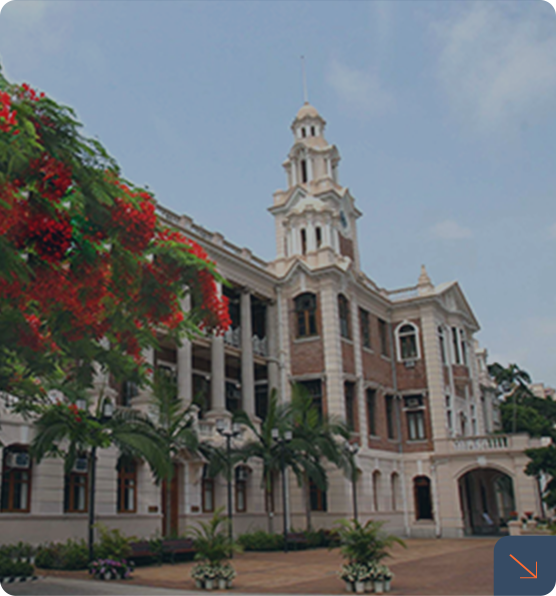
Leveraging US H-1B Fee Hike to Advance Tech Competitiveness in Mainland China and Hong Kong
Dr Jing Li
1 October 2025
US president Donald Trump recently signed an executive order announcing that, effective 21 September 2025, foreign first-time applicants for H-1B work visas will be required to pay a staggering US$100,000 visa fee. This policy shift took American companies and overseas talent by surprise, with those in the technology sector bearing the brunt in particular. Should this policy be fully implemented, not only will the US technology ecosystem be transformed, but global talent, capital, and innovation chains will also undergo adjustments. As an international hub for finance, trade, and technology, Hong Kong―along with Mainland cities that are vigorously pursuing technological self-reliance and strength―should calmly assess the potential impacts. Together, they should also take measures to seize this rare, not-to-be-missed opportunity to attract talent.
The soaring H-1B visa fee may cater to political demands in the short term, but from the perspective of business operations and industry development, this new policy will push up costs, stifle innovation, and compromise attractiveness to investment, eventually undermining the sustainable competitiveness of the American economy.
Regarding the resulting short-term rise in corporate manpower costs, take the case of technology giants such as Apple, Google, Amazon, and Facebook. A considerable proportion of their research teams consists of high-calibre professionals who are H-1B visa holders. A visa fee of US$100,000 would entail a substantial additional expenditure for foreign workers or businesses hiring them. In response, companies will need to cut research and development (R&D) budgets, scale back recruitment, or seek local high-skill technology workers as replacements, ultimately weakening their capacity for technological innovation. Start-ups are likely to be affected even more severely. With limited capital to begin with, many emerging technology firms may be compelled by the hefty visa fee to forgo hiring elite global talent or even relocate R&D positions overseas to alleviate cost pressures. This will not only hamper the local innovation ecosystem, but may also trigger an outflow of high-tech positions, contradicting the policymakers’ original intention of “protecting American jobs”.
In the long run, such a policy change will seriously damage the global competitiveness of America’s high-tech sector, whose advantage largely depends on a diverse and open talent system conducive to the convergence of technology experts from around the world, including world-class engineers and scientists. However, with its strong hint of protectionism, the visa fee increase may prompt the international talent pool to turn towards Canada, Europe, or Asia, which boast more immigrant-friendly policies. Meanwhile, venture capital firms may begin to re-evaluate the long-term investment prospects of America’s technology sector. Should businesses find it hard to recruit top foreign talent, the pace of innovation will stagnate and investment returns will decline. A portion of capital may flow to countries with more attractive talent policies, further diminishing America’s leading edge in the global technology race.
“Risk-averse” global talent mobility driven by policy uncertainty
The sudden surge in H-1B visa fees poses a grave threat to America’s role as a magnet for talent from around the world. The core advantage of its human resource strategy―an open and stable immigration environment―is now under serious challenge. Transnational migration of skilled manpower is a long-term, high-cost investment and one of its determining factors in the entire process is “certainty”. Nevertheless, recurrent heated debates and changes in US immigration policy are gradually eroding this foundation of trust. Even if the visa fee escalation will eventually be mitigated in response to the policy’s adverse effect on the high-technology sector, the negative consequences of policy uncertainty will persist. There is growing concern that the current visa fee issue could be followed by an extension of the green card waiting period to as long as 10 years. Such uncertainty will directly shape the policy-making mindset about transnational talent.
From the perspective of behavioural economics, such a psychological change is fostering a “risk-averse” flow. Top technology professionals are gradually breaking away from their path dependence on the US market, opting instead for a diversified distribution strategy. Recent years have seen the introduction of immigration policies in Canada, Australia, and the EU, with the aim of drawing in technology talent. Take Canada’s Global Talent Stream, for instance: its fast-track approval mechanism (sometimes completed within merely two weeks) together with a transparent immigration pathway has succeeded in welcoming a significant number of technology professionals who had originally planned to relocate to the US. Other similar programmes, such as the EU Blue Card and Australia’s National Innovation Visa, offer high-tech entrepreneurs a less costly and more stable access to permanent residency. Now that the US work visa fee has soared to US$100,000, rational decision-makers will inevitably reassess their immigration options, redirecting their destinations to places with more stable policies, lower costs, and clearer pathways to permanent residency. This structural change in talent mobility has the potential to redefine the technology and innovation landscape in the US or even across the world.
A more far-reaching impact is most pronounced in the field of education, where American universities are becoming less and less appealing to international students. Huge tuition fees and uncertain employment prospects have prompted prospective foreign students to reassess the risks and benefits of pursuing studies in the US. If this trend persists, it could fundamentally undermine the nation’s talent reserves and scientific research capacity. The “risk-averse” behaviour of both skilled individuals and capital not only highlights shortcomings in the current policy environment, but also threatens to have a profound effect on America’s long-term competitiveness.
The H-1B visa fee hike will also inflict temporary hardships on China’s technology industry and talent pool. Exchanges between Chinese technology professionals and their American counterparts will undergo challenges and hurdles due to high costs and uncertainty. Yet, ultimately, these policy impacts are bound to cultivate a more diversified and balanced global innovation system. For both the Mainland and Hong Kong, this will represent more of a strategic opportunity than a challenge. Implementing effective measures to bring back high-tech talent to the Mainland and Hong Kong will be vital to building a world-class innovation ecosystem in the Greater Bay Area. For Hong Kong, this is not only a pivotal moment to test its adaptability, but also an opening to redefine its role as an international innovation and technology hub. Only by proactively embracing change can the city reinforce its competitive edge in the evolving global technology landscape and make an irreplaceable contribution to the national strategy for technological leadership.
Against the backdrop of tight restrictions introduced by the US, Hong Kong should leverage its unique advantages under “one country, two systems”―ranging from a simple, low-tax regime and an internationalized living environment to the backing of the Mainland’s enormous market―to proactively attract top-notch technology professionals and scientific research teams affected by the new visa policy, and grasp the historic opportunity of “the return of international technology talent”. In recent years, Hong Kong has rigorously promoted talent admission schemes, for example, the Top Talent Pass Scheme and the Quality Migrant Admission Scheme. In response to the latest US policy, the city can further optimize these initiatives by focusing on strategic industries such as artificial intelligence, financial technology (fintech), and biomedicine. Through measures covering streamlined approval procedures, tax incentives, and convenience in daily life, Hong Kong can keep its doors wide open to global talent.
In addition, local higher-education institutions should also proactively take advantage of the new opportunities. Faced with high visa costs and employment uncertainty in the US, more young students will choose to pursue studies in other countries, while more professors and scientists are likely to return to their home nations. Taking this opportunity, Hong Kong’s higher-education institutions should expand intakes for their science, technology, engineering and mathematics (STEM) programmes, actively recruit distinguished professors and scientists, and bolster employment support. They should also strengthen cooperation with the Hong Kong Science Park and fintech companies to enhance the city’s innovation and technology talent pool.
All in all, the US H-1B visa fee hike is set to reshape the global mobility of science and technology talent, opening up strategic opportunities for technological development and innovation in both Hong Kong and the Mainland. Hong Kong should capitalize on its policy strengths and internationalized environment to proactively attract talent. Such a trend will not only reinforce Hong Kong’s position as an international hub for finance, trade, technology, and innovation, but also give further play to its role as a “super connector”, enabling it to contribute to national goals of technological self-reliance and strength.






